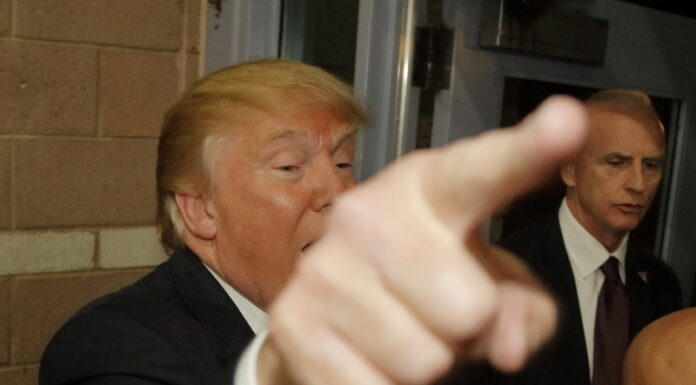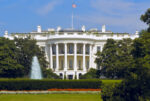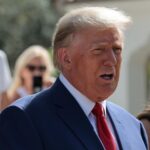President Donald Trump faced criticism after appearing confused about tariff deadlines during a press interaction at Morristown Municipal Airport on Sunday evening, July 6, 2025. When asked to clarify whether tariff rates would change on July 9 or August 1, Trump initially responded with confusion before providing an unclear answer about his administration’s trade policy.
The exchange occurred as Trump prepared to board Air Force One following a weekend at his New Jersey residence. A reporter asked directly about the timing of tariff rate changes, specifically whether they would take effect on July 9 or August 1. Trump initially leaned in, asking the reporter to repeat the question, possibly due to aircraft noise in the background.
Trump then provided what observers characterized as a confusing response: “They’re going to be tariffs. The tariffs are going to be the tariffs. I think we’ll have most countries done by July 9. Either a letter or a deal.” Commerce Secretary Howard Lutnick subsequently stepped in to clarify that tariffs would go into effect on August 1, adding that the President was setting rates and negotiating deals in the interim.
The confusion stems from Trump’s complex tariff timeline. In April 2025, the President implemented what he called “Liberation Day” tariffs, which caused significant market volatility. Within a week, his administration announced a 90-day pause on most levies to allow time for negotiations. That pause was originally set to expire on Wednesday, July 9, 2025.
Treasury Secretary Scott Bessent clarified the administration’s position during a CNN appearance on Sunday, explaining that approximately 100 letters would be sent to smaller trading partners, many already at the baseline 10 percent tariff rate. He indicated that Trump would send letters to trading partners warning that failure to reach agreements would result in tariffs returning to their April 2 levels on August 1.
The President’s apparent confusion prompted immediate reaction on social media platforms. Critics questioned Trump’s understanding of his own administration’s signature economic policy. The MeidasTouch Network suggested Trump was unaware of ongoing developments, while political commentator Keith Olbermann characterized the exchange as evidence of potential mental decline.
Following the airport interaction, Trump posted on his Truth Social platform announcing that tariff letters would be delivered starting at 12:00 PM Eastern time on Monday, July 7. He indicated that between 12 and 15 countries would receive initial notification letters, with the possibility of reaching deals with most countries by the original July 9 deadline.
On Monday, July 7, Trump began implementing his promised tariff notifications, sending letters to Japan and South Korea announcing 25 percent tariffs on their imports. Additional letters went to South Africa, Malaysia, Myanmar, Laos, and Kazakhstan, with tariff rates ranging from 25 to 40 percent. These tariffs were scheduled to take effect on August 1, 2025.
White House Press Secretary Karoline Leavitt confirmed that Trump would sign an executive order officially delaying the original July 9 deadline until August 1. She indicated that approximately 12 additional countries would receive tariff notification letters in the coming days, with the President determining specific reciprocal tariff rates during the extended negotiation period.
The administration’s tariff strategy has produced limited results thus far. Despite initially promoting a goal of “90 deals in 90 days,” Washington has successfully concluded agreements with only the United Kingdom and Vietnam. The United States and China reached a temporary agreement to reduce exceptionally high tariffs that had previously reached triple-digit levels.
International leaders have expressed resistance to Trump’s tariff threats. Japanese Prime Minister Shigeru Ishiba stated on Sunday that he would not easily compromise in trade negotiations with Washington. BRICS leaders meeting in Rio de Janeiro expressed serious concerns about what they characterized as indiscriminate and potentially illegal import tariffs, warning of negative impacts on global trade.
Trump responded to BRICS criticism by threatening an additional 10 percent tariff on any country aligning with what he termed the group’s anti-American policies. This threat would affect major economies including Brazil, Russia, India, China, and South Africa, representing a significant escalation in the administration’s trade confrontation.
The tariff confusion reflects broader challenges in the administration’s trade policy implementation. Anonymous sources close to the White House suggested to Politico that Trump’s tariff announcements might be largely theatrical, questioning whether firm deadlines actually exist for the threatened trade measures.








